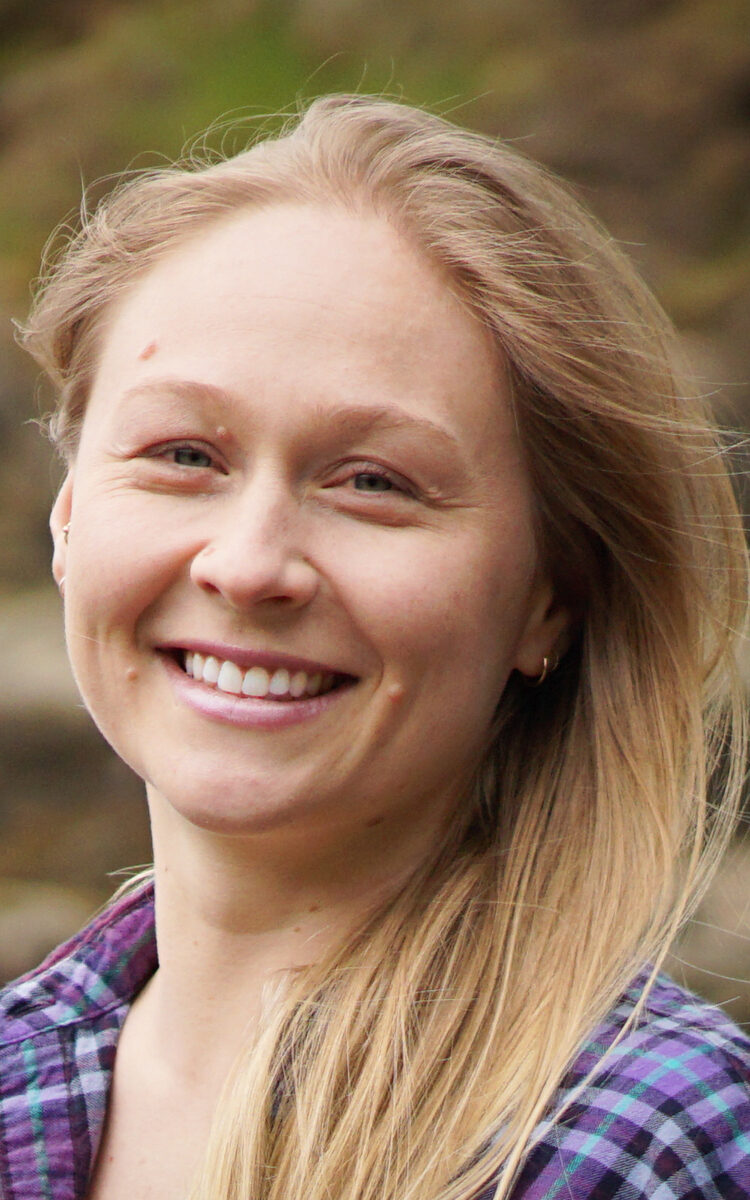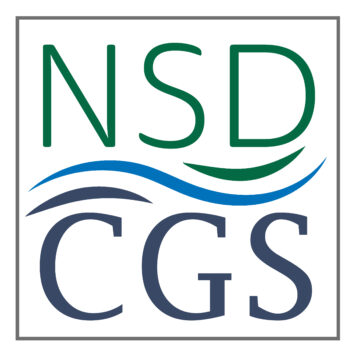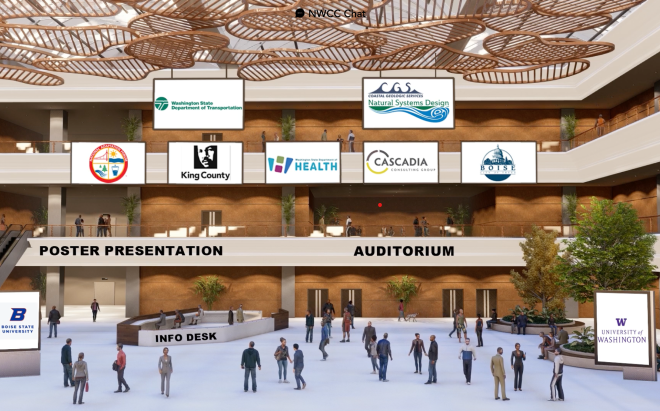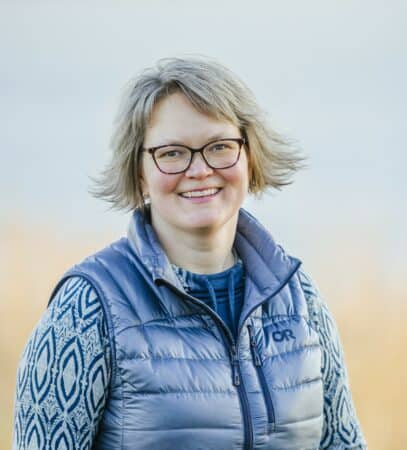Northwest Climate Conference – 2023
Last month, Natural Systems Design sponsored the 12th Annual 2023 Northwest Climate Conference hosted by Boise State University. This entirely virtual event featured presentations from NSD team members – Davey French, Avery Maverick, Susan Dickerson-Lange and Kenna Patrick.

Davey French
Davey French, an environmental and aquatic scientist, presented a compelling case study about NSD’s recent investigation of thermal refuges in the Puyallup watershed’s South Prairie Creek with the Puyallup Tribe of Indians.
Titled “Managing for Current and Future Stream Temperatures: A Data-Driven Approach for Designing Instream Actions to Protect and Enhance Thermal Refuges,” his talk walked attendees through the EPA-funded study’s methodology and findings.
“The study focused on three basic questions,” he said. “Where are thermal refuges? What are their geomorphic and hydrologic drivers? And are there opportunities for protecting, enhancing, or creating thermal refuges for the benefit of coldwater fish?”
Protecting and Enhancing Thermal Refuges
Ultimately, the study team determined that there are multiple ways to protect and enhance thermal refuges in the Puyallup watershed.
This includes:
- reducing mixing at cold tributary confluences by deflecting warm mainstem flow away from cold tributaries or by creating complex cover within cold plumes where fish can leverage these thermal refuges;
- implementing strategies to increase fish access to cold floodplain wetlands;
- restoring wetland habitat to increase hydrologic connectivity between cold water sources and the warmer mainstem;
- increasing engagement of forested side channels by inserting structures that deflect flow locally, which could raise water surface elevation, provide cover, and promote development of forested islands.

Avery Maverick
Avery Maverick, a coastal geologist who joined NSD when it acquired CGS earlier this year, presented “Prioritizing Sea Level Rise Exposure and Habitat Sensitivity Across Puget Sound.” She discussed the recently completed two-year study that created a sea level rise (SLR) vulnerability index for Puget Sound that includes both shoreline infrastructure and habitat sensitivity at the parcel scale.
Vulnerability and Exposure Index
This assessment was based on a quantitative vulnerability framework, which defines vulnerability as a function of exposure and sensitivity.
The exposure index, which incorporates flooding and erosion, was coupled with the sensitivity index, which integrates infrastructure and coastal habitats into a total vulnerability index.
The vulnerability score informs local hazards planning and habitat restoration efforts for every shoreline parcel within the region using SLR projections out to 2100.
The team coupled these results with a concurrently developed social vulnerability index that provides additional insight about the people and places predisposed to adverse impacts from SLR-related risks.
This approach ranks parcels in a way that considers present and future potential flooding, the impact on existing infrastructure, and habitats and community resilience.
Puget Sound – December 27, 2022
Avery told attendees that the study findings were validated to some degree after a high-water event in Puget Sound on December 27, 2022.
John Lovie, of Habitat Strategic Initiative, compared the flooding in Island County with the project results for the top 500 most vulnerable parcels in the county. He said, “All the flooding in the recent storm occurred within those areas, and virtually all [the 500 most vulnerable parcels] had some flooding.”
The next step for this initiative includes expanding the project to the Strait of Juan de Fuca, while future projects may trim tideland portions of parcels, as well as incorporate factors such as setback to infrastructure, levee mapping, updated shore armor mapping, investigating other ways to rank habitat change, and septic.
Speaker Series Program – 2023
Learn more about this SLR event that took place on December 27, 2022, and why it matters, from Washington Sea Grant’s, Dr. Ian Miller, who presented at our November 2023 – Speaker Series presentation. Recording now available in case you missed it!
Susan Dickerson-Lange and Kenna Patrick
Dr. Emily Howe, an aquatic ecologist with The Nature Conservancy, presented on behalf of Susan Dickerson-Lange and Kenna Patrick on their recently published work “Does Forest Management to Reduce Fire Risk Increase or Decrease Snow Storage in the Eastern Cascades?”
The presentation addressed the hydrologic impact of forest management actions such as forest thinning and gap creation, which are being implemented across the western United States to reduce wildfire and forest mortality risk as the climate warms.
In mountainous watersheds, forests influence the depth and duration of the seasonal snowpack, which in turn affects instream water availability and timing.
Eastern Cascades
The Eastern Cascades region in Washington State is a focus area for fire fuels reduction, but it is also in a transitional zone between maritime and continental climate conditions.
With substantial uncertainty in this climate zone as to whether reduced forest density will increase or decrease the persistence of the snowpack across the landscape, the study team (Natural Systems Design, The Nature Conservancy, University of Washington, and SPU) collected three years of snow observations to characterize how forest management efforts in this region may influence the magnitude and duration of snow storage.
The collected data suggest that prescriptions to reduce forest density through thinning and creating gaps may increase the overall amount of snow storage by reducing loss due to sublimation and melting of canopy-intercepted snow.
However, reducing forest density in the Eastern Cascades is unlikely to buffer climate-induced shortening of snowpack persistence, with the possible exception of gap creation in north-facing forests.
12th Northwest Climate Conference Program
Northwest Climate Conference presentations for Davey French , Avery Maverick and Dr. Emily Howe are currently available for viewing by clicking the following links:
- Davey French – Presentation for NW Climate Conference 2023
- Avery Maverick – Presentation for NW Climate Conference 2023
- Dr. Emily Howe – Presentation for NW Climate Conference 2023

Finally, Davey, Avery and Susan Dickerson-Lange are also each developing a summary based on the topic of their presentation which will be shared in the near future.
Stay tuned!





